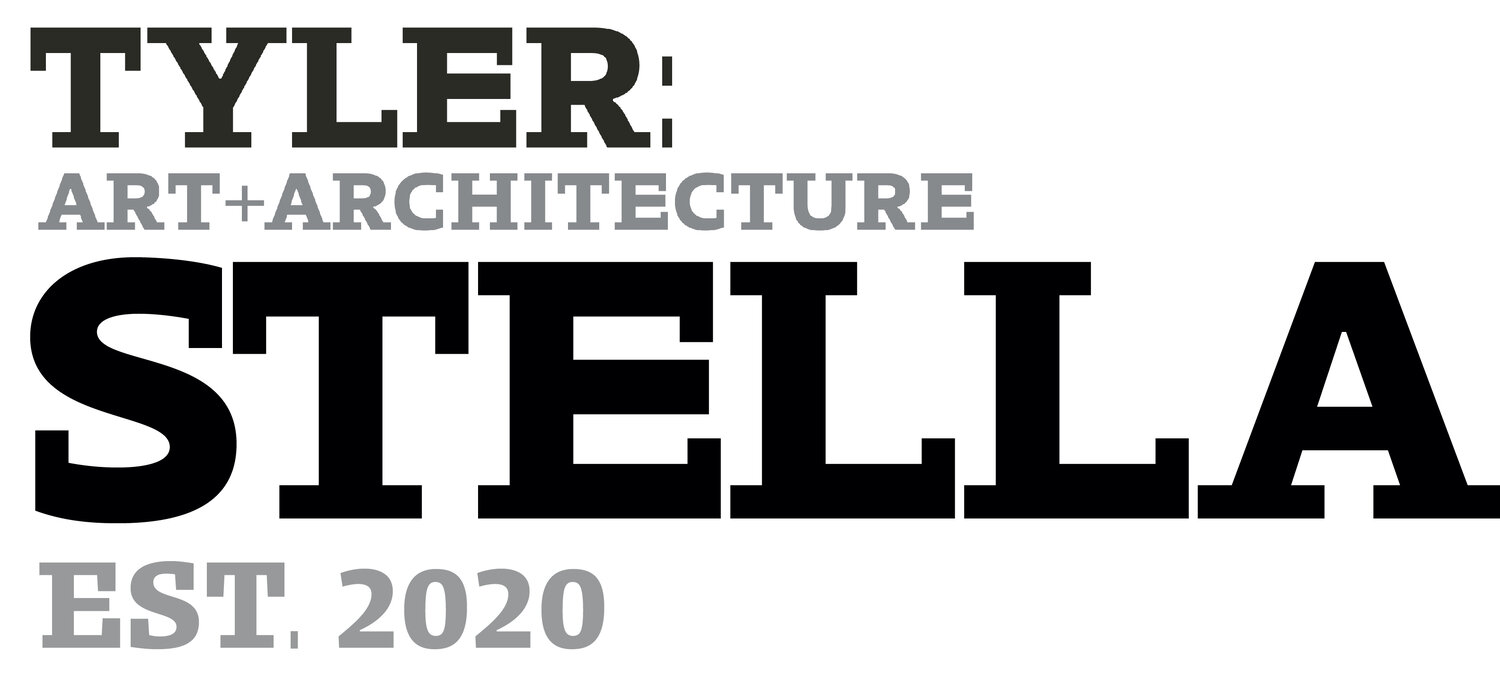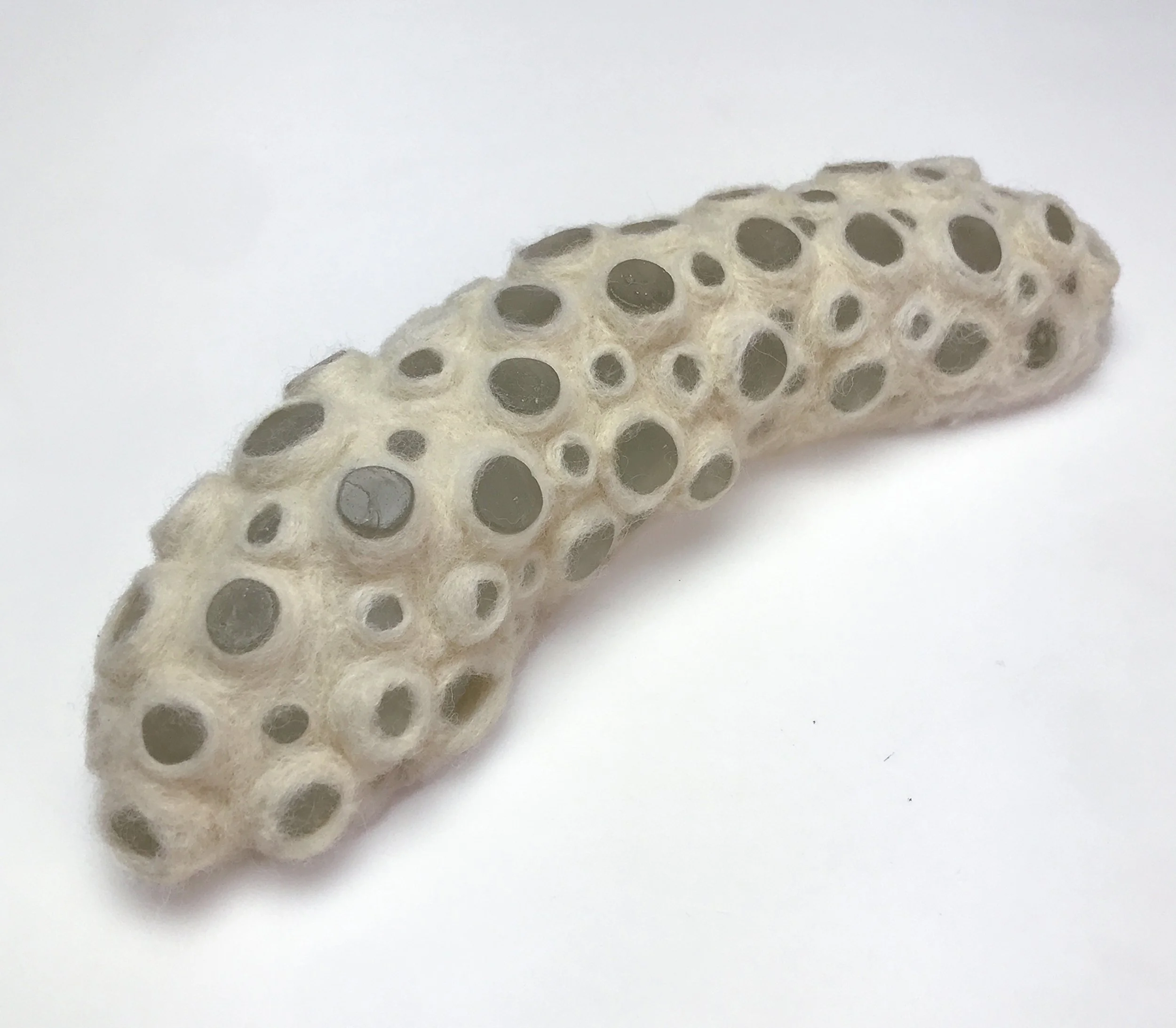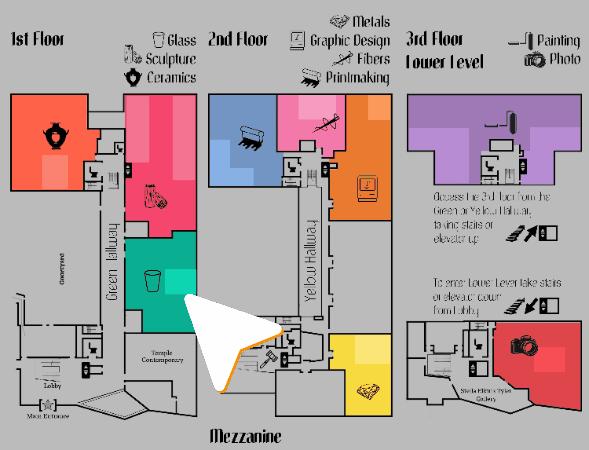Exer Thuston
“Peek,” 13” x 4” x 4”, Hot cast glass, wool
There is a quality in an object that cannot be quantified or conveyed in an image. The image is a projection of ideas, but an object projects ideas outward. When making, there is a moment where an object changes from concept to thing, where something shifts and the object becomes separate from the maker. The line between concept and object is indefinable yet definite, as is true for all lines drawn. Taxonomies are necessary tools for organizing and understanding the world around us, but they are inherently fallible as they are human tools. The definitional grid placed over the wild landscape can be visualized as a three-dimensional object; there are points where the line between two concepts or objects is thin from one angle and wide from another. This research is approached through the lens of queer theory. Queerness can be defined as non-dominant sexual or gender practices but is more widely understood by queer theorists as all that which is in a frictive relationship to the dominant position. The queer lens is oblique to the dominant lens; when the landscape is viewed through the queer lens the dominant lens can be observed. Being on the outside means you can look in.
Having an object-centered practice means actions are focused on making. Making is an intellectual practice; the work is in investigating the object rather than making as a means to an end. Close attention is paid to how materials interact and how forms coalesce, working in collaboration with material. The forms do not directly reference any living animal but pull from different creatures embodying the queer spirit of resisting quantification. The work connects to things seen or made before, drawing mental parallels between objects, concepts, and disciplines. This work is informed by the layers of translation and transformation within the casting process as well as interactions between glass and different media. Glass becomes soft when paired with a rigid medium but hardens when paired with a flexible one. The violation of material expectations grants the object agency, drawing the viewer in. This state of curiosity relates back to the queer lens. An easily read object does not cause discomfort, as it is well understood within the dominant perspective. An object which causes confusion, intrigue, or unease is oblique to the grid and can thus be understood as queer.
Exer Thurston
Exer Thurston dropped a brick on their bare toe when they were 10 years old and it still feels weird whenever they swim. Their life has been spent tying things together with string and fiddling with whatever materials are on hand. Time spent with material is integral to their work. They spent several years working as a farmhand in Northeastern Vermont before receiving a BA in Studio Art from the Ohio State University in 2023 with a full ride. They have worked at several arts institutions including the Wexner Center of the Arts, STARworks Art Center, Columbus Glass Art Center, and the Ohio State University. Exer’s research is broad, covering studio art, curation, linguistics, biological sciences, translation, taxonomy, and queer theory. They work largely as a caster and mold maker, but also work with metal, stone, ceramic, paper, and fiber. Their work is focused on the object as entity, utilizing and disrupting material expectations to create works with a sense of autonomy.



